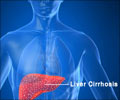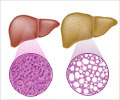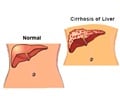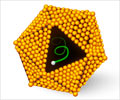University of California, San Diego scientists have developed a novel technique that would pave way for more effective treatments for liver disease.
During the study, researchers utilized an array system that can identify the biological components that can lead to or alleviate liver disease.It works by controlling the range of environments surrounding star-shaped liver cells called hepatic stellate cells (HSCs), cells involved in liver fibrosis, which is the formation of scar tissue in response to liver damage.
Current approaches to identify the factors affecting HSC biology typically focus on each factor individually, ignoring the complex cross-talk between the many components acting on the cells.
The high-throughput cellular array technology developed by UCSD researchers systematically assesses and probes the complex relationships between hepatic stellate cells and components of their microenvironment.
By doing this, they found that certain proteins are critical in regulating HSC activation and that the proteins influence one another's actions on the cells.
The new technique was developed by Shu Chien, co-author of the paper and bioengineering professor and director of the Institute of Engineering Medicine at UCSD.
Advertisement
"By looking at the array you get hundreds of different combinations of proteins and you can look at hundreds of cells at once," said Dr David Brenner, Vice Chancellor for Health Sciences and Dean of the UCSD School of Medicine.
Advertisement
The study appears in journal Integrative Biology.
Source-ANI
ARU














